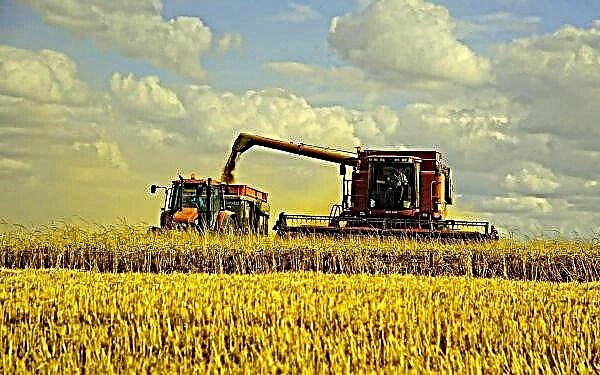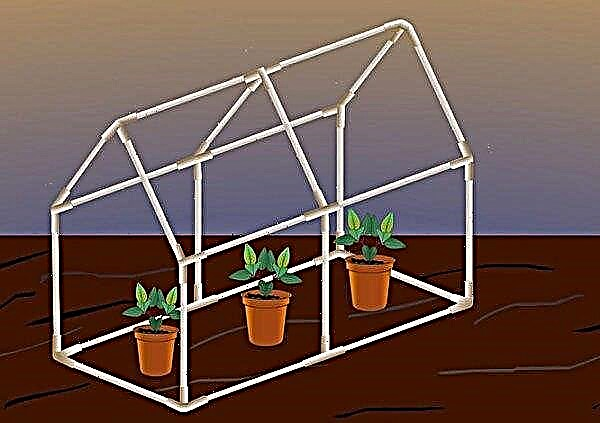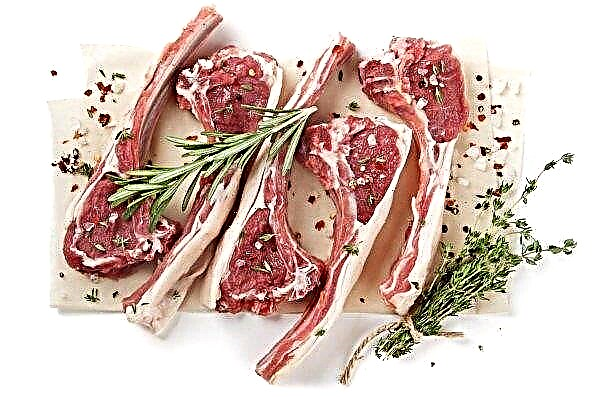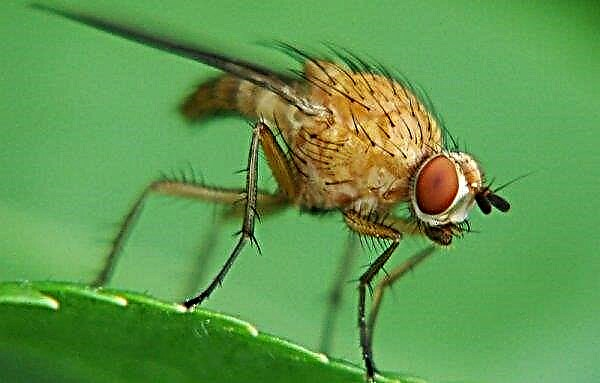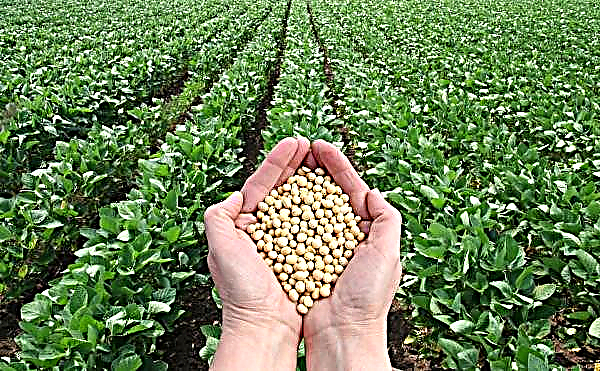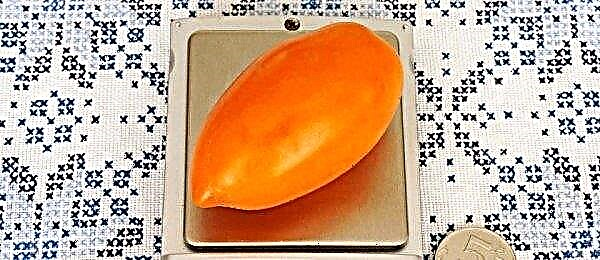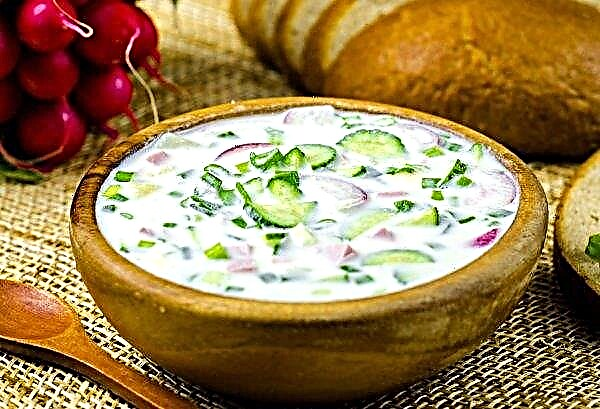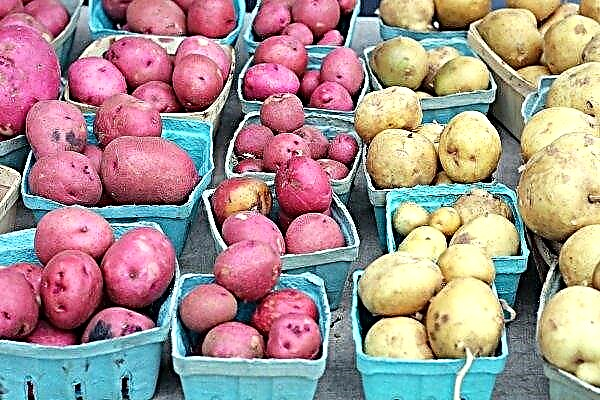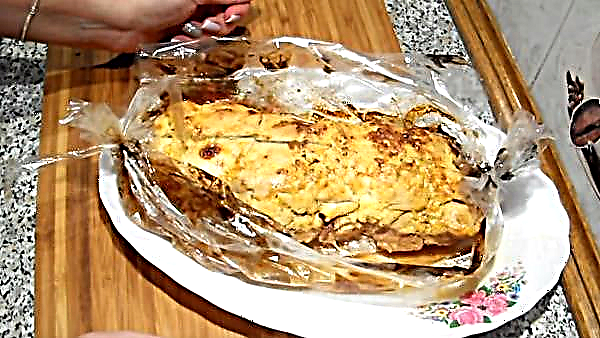For the successful raising of chickens at home, there is little industriousness and diligence. It is necessary to choose a species of birds that will be unpretentious in the care and at the same time satisfy all the necessary requirements - provide a sufficient amount of meat and eggs. One of these breeds is the cochinchina, consider the varieties and features of the content of these birds.
A bit of history
The modern name of the breed is associated with the ancestors of these large chickens - yellow birds were raised in Vietnam, the area of Kokhinhin in the Mekong Delta. In 1843, hens were introduced to Europe, and during breeding by crossing with meat and meat and egg European representatives, a modern bird was obtained with more magnificent plumage and expanded color.
Did you know? In Europe, the first domesticated hens appeared 500 years BC. e. and only at the end of the 18th century did chicken become a leader in poultry farming. And the pioneers in the domestication of chickens were Persians.
General characteristics
Among the many birds walking in the yard, these birds can not be overlooked. These beautiful chickens are distinguished by a harmonious physique and regal posture.
Appearance
Consider the external characteristics of the cochinchins, presented in the table below:
| External data | Description |
| Head | Small and elegant |
| Crest | Unary, simple form, saturated red color with correctly cut teeth |
| Beak | Short, irrespective of the color of the feathers, may be yellow or black-yellow |
| Neck | Powerful and short with a lush mane of feathers |
| Chest | Massive with a slight bend |
| Stomach | Wide and full |
| Wings | Located high, the length is proportional to the body, pressed against the body |
| Tail | The chicken is short, the rooster is long, raised high, with sufficient plumage and hanging individual feathers |
| Paws | Short, especially in chickens, completely covered with feathers |
| Plumage and color | Lush and loose, hens are like balls, their color is provided for in the standard: white and black, fawn, blue, partridge, striped and black and white |
Temperament
Birds are characterized by a calm disposition, they easily tolerate a change in the environment, in particular, the difference in temperature and humidity. These qualities make it easy for birds to be kept in private courtyards and small farms for their own needs and for sale.
Important! The fertility of chickens is 80%, which is a low indicator for breeding in large quantities, and the survival rate of chickens is 90%.
Advantages and disadvantages
- Positive qualities of the breed:
- quick weight gain: for example, by 4 months of life, a chicken weighs up to 2.7 kg;
- good health and high immunity to diseases;
- unpretentious to the content and do not require large walks;
- highly developed maternal instinct;
- lack of aggression towards people and animals;
- ability to lay eggs throughout the year, especially in winter and spring;
- meat yield is 80%;
- beautiful external indicators.

- The disadvantages of birds include:
- a tendency to gain fat;
- small chicks do not build a feather well;
- ability to lay eggs only after 7 months;
- expensive in price.
Varieties
The breed standard provides for several subspecies depending on the color of the feathers. Allocate kokhinkhin blue, partridge, fawn, striped, black and white. According to the small body structure, dwarf cochinchins are also identified in a separate subspecies.
Kokhinhin dwarfish
Decorative subspecies with representatives weighing no more than 1 kg. In this case, the body is stocky with enough muscle. The feather is soft, like fluff, and the tail looks like a ball, the legs do not have as much plumage as large representatives of these species. The color of the dwarf kokhinkhins complies with the standard, but the golden ones are most distinguished.
Blue
Blue-gray color should be uniform throughout the plumage, without any inclusions and borders. The feather is velvety, and the lower fluff may be lighter. Allowed the color of the head, neck, covering the feathers of the wings and back of a black hue. The beak is yellow.
The black
This subspecies is the most popular. The standard involves the coloring of feathers in black with a greenish tint. Possible, but undesirable purple tint. The downs may be white, but it is invisible under the main pen. The beak is dark yellow in color.
Pale yellow
This subspecies is also called yellow. The color is uniform for the entire plumage, it can be golden and red and shine well. Thoroughbred fawn cochinchins have fluff of the same color, as well as a bronze tint on the tail and wings.
Striped
On the primary black color of the pen, there are transverse stripes of gray-blue color, the fluff is more monophonic. Metatarsus and beak yellow. Suppose on the legs a grassy tide.
White
Birds of this color attract attention with their feathers of snow-white color, which are cast in the sun with silver. The metatarsals of the white kokhinkhins are yellow. Blotches of a different color are not allowed.
Partridge
This variety has strict restrictions on the colors of the rooster and the chicken. The male’s head is covered with brown-red plumage with a golden brown mane, a golden yellow border is located on the feathers and black strokes along the rigid shaft. The outer colors of the feathers on the wings are brown, and the wrong side is black. The same color has a feather tail and metatarsus, and down is rich gray.
Did you know? The smallest chickens weighing up to 300 g and roosters up to 600 g are Malaysian sulfur. And in the largest domestic breed of hens of the Jersey giant, a cock can weigh up to 7 kg and a chicken up to 5 kg.
The chicken has a brownish-golden color, some feathers with a repeating narrow border, which is located one after another and at the same distance. The plumage of the tail and metatarsus is brown-black.
Content Rules
Despite the fact that hens of this species are unpretentious to care, there are still some features that will be described below.
Chicken coop
Birds are unpretentious in maintenance. Chickens not only do not fly, but also do not like to run, most of the time they sit or walk leisurely. They can easily do without even a free-range aviary. Important for hens of this species is the floor in the chicken coop, namely: the material from which it is made. Since the feature of kokhinkhins is the presence of plumage on the legs, it is better to make the floor wooden or concrete.
Important! The beginning of productivity and egg production under a normal diet and conditions of detention can be regulated - daylight hours should be at least 18 hours a day.
Lime is scattered on top and the litter (minimum 10 cm) is laid on the basis of sawdust or straw. In cold weather, it is recommended to add peat, which produces heat as a result of chemical processes. The size of the chicken coop is selected based on the requirements - for 3 chickens you need an area of 1 square. m. Roosts are an important fixture in the chicken coop, these are bars with a diameter of about 5 cm. On average, one chicken is given up to 30 cm, this should be taken into account, knowing approximately what kind of livestock you will have. The distance between the bars is 40 cm, and the height of the installation for birds should not exceed 20 cm. The nests can be from ordinary boxes or baskets, the main thing is that the chickens are comfortable, their number is calculated from the norm - 1 pc. for 4 chicken. Approximate size: 30x30x40 cm. The bottom is covered with straw or sawdust and placed in secluded places. The temperature regime of the room where the birds live should be in the range + 10-15 ° С. In the winter season, fluctuations up to -2 ° C are allowed, and in summer - up to +25 ° C.
The distance between the bars is 40 cm, and the height of the installation for birds should not exceed 20 cm. The nests can be from ordinary boxes or baskets, the main thing is that the chickens are comfortable, their number is calculated from the norm - 1 pc. for 4 chicken. Approximate size: 30x30x40 cm. The bottom is covered with straw or sawdust and placed in secluded places. The temperature regime of the room where the birds live should be in the range + 10-15 ° С. In the winter season, fluctuations up to -2 ° C are allowed, and in summer - up to +25 ° C.
Care
The intensity in weight gain and egg production depend not only on the diet, but also on the constant care of the livestock, which consists in cleaning the room, which consists of several types:
- Dry stage - the chicken coop is exempted from chickens and litter, litter and the rest of the feed are removed, with a scraper they clean all dirty surfaces.
- Wet stage - wash the premises with detergents for the chicken coop, you can add apple cider vinegar (2/3 parts) or soda ash (2%) to the water.
- Disinfection - It is better to use professional products that create a protective barrier for the development of the fungus for 45 days. The disinfection process should be carried out every 2 months in conjunction with cleaning. Complete deep cleaning is carried out once a year.

Feeding troughs and drinking bowls
To ensure normal livelihoods, chickens need devices for food and water. Feeding troughs are recommended to be placed at height. In this condition, they will be clean, because the birds will not be able to get into them and scatter food. It is important to set as many feeders so that the nutrition process is simultaneous - this will allow all pets to develop equally.
Today, the market is considering many offers. It is recommended to use plastic drinkers for liquid feed, which are easier to wash. Wooden containers are installed for dry food. There should always be clean water in the drinkers.
Herd replacement planned
There are no exact recommendations regarding the time of replacement. However, it is important to understand that older birds are worse, besides this, their immunity to infectious diseases is weakened. That is why it is recommended not to keep chickens for more than 4 years.
Walking yard
Slow and calm birds indicate that the small yard is quite enough for the birds. They can wander there to nibble small pebbles or get food. For its arrangement, it is enough to enclose the selected territory with a net no more than 1 m high.
Moult and egg laying break
Every year in autumn, birds begin a period of plumage change. Shedding is a natural process that also helps clean the top layer of the skin. Most often, this period takes about a month. At this time, it is extremely important to slightly change the diet, adding additional trace elements to it. Egg laying at this time ceases, but there is no need to worry, since immediately after the completion of the molting this process will be restored again.
What to feed
Unpretentious diet and excellent appetite are some of the advantages in breeding kokhinkhin. It is only necessary to adhere to a well-balanced diet, which will quickly gain productive indicators corresponding to the breed.
Important! Improper nutrition can result from underweight or overeating and even lead to cannibalism. Calcium and phosphorus in the diet are well reflected in the formation of eggs.
Adult chickens
The ideal option is a professional feed, in which there are all the necessary additives for proper development. In the cold period, it is recommended to give:
- whole grain;
- meat and bone meal;
- crushed chalk;
- different vegetables;
- fine gravel.
 With all this, you need to know that roosters can, and chickens can not eat protein, since it is harmful to their body. To cleanse the stomach according to the season, grass or hay must be given. Feeding in adult birds is three times a day.
With all this, you need to know that roosters can, and chickens can not eat protein, since it is harmful to their body. To cleanse the stomach according to the season, grass or hay must be given. Feeding in adult birds is three times a day.Chickens
The diet of babies depends on age and is different from eating adult birds. Chicks younger than 20 days better absorb liquid food, which is given with an interval of 2 hours, which contributes to their rapid growth. At first, they are fed with broths and mashrooms prepared on milk. After 7 days, it is recommended to begin to sprinkle cereals (ground corn, semolina and hercules), sprinkling them on the litter. At the same time, cottage cheese, milk powder and various vegetables are introduced.
Professionals recommend feeding the chickens separately, as they climb into a common feeder and contaminate the food with paws, which can cause infection of immature organisms. Chickens that have grown up to the age of 28 days are transferred to professional compound feed for chickens. It is important to introduce crushed chalk, eggshell and fine sand into its composition - these elements are important for the complete processing of feed. The main goal of feeding young animals in this period is a quick transfer to adult food.
Cochinha and Prawn chickens: differences
Despite the general genetics, the hens of these breeds have differences not only in external indicators, but also in productivity:
| Productivity indicators | Brama breed | Cohinhin breed |
| Chicken Weight | 3.5-4 kg | 3.5-4 kg |
| Rooster Weight | 4.5–5 kg | 4-5 kg |
| Puberty | 8 months | 7 months |
| Egg production per year | 120–150 pcs. | 100-120 pcs. |
| Egg Weight (Medium) | 60–65 g | 55-60 g |
| Egg color | cream | brown |
 For all this, Brahms are more elegant, because they have a thin skeleton in comparison with the Cochin. Having become acquainted with the kokhinkhins, one can come to the conclusion that even a novice poultry breeder can bring such birds, since they are unpretentious in the care and feeding and can provide in full not only delicious dietary meat, but also eggs.
For all this, Brahms are more elegant, because they have a thin skeleton in comparison with the Cochin. Having become acquainted with the kokhinkhins, one can come to the conclusion that even a novice poultry breeder can bring such birds, since they are unpretentious in the care and feeding and can provide in full not only delicious dietary meat, but also eggs.
